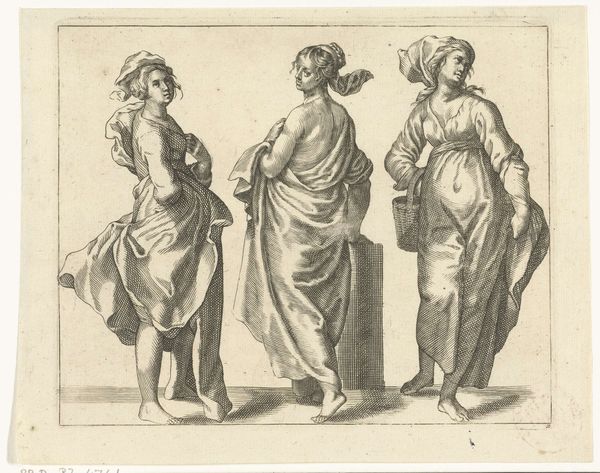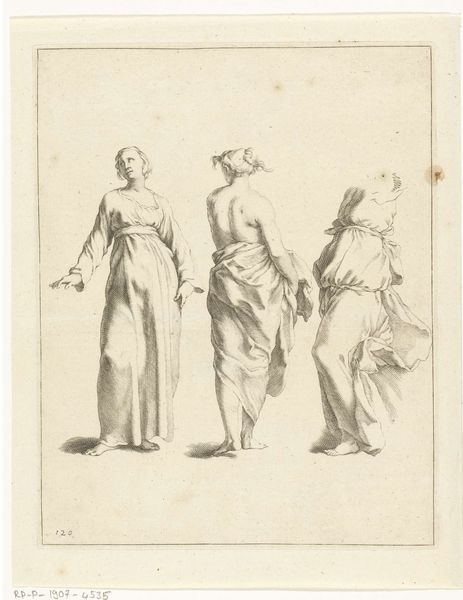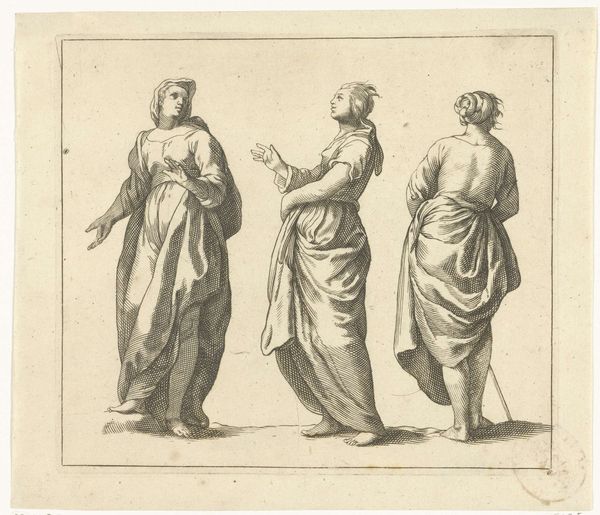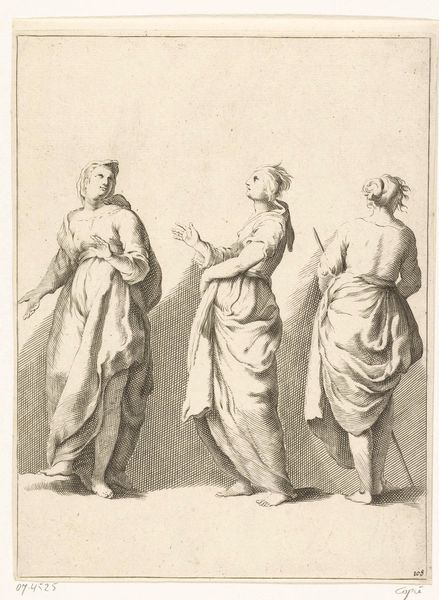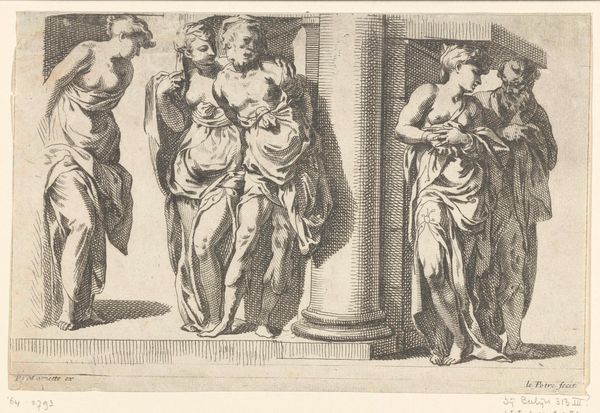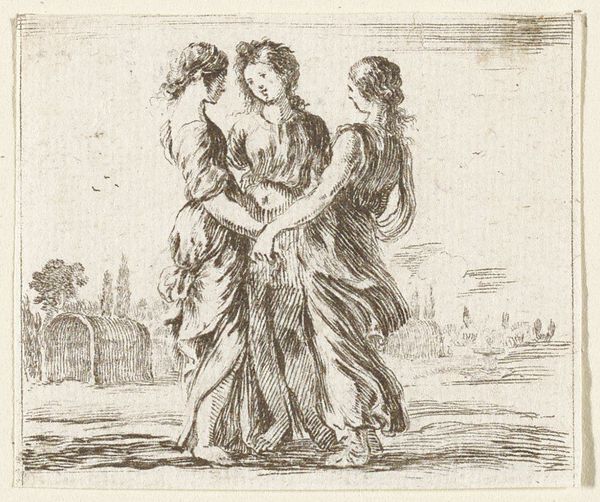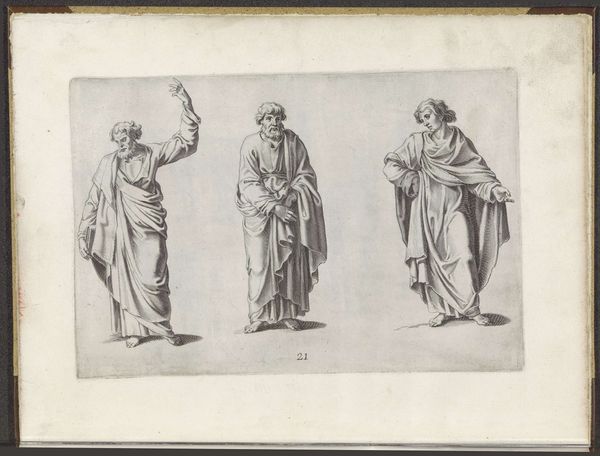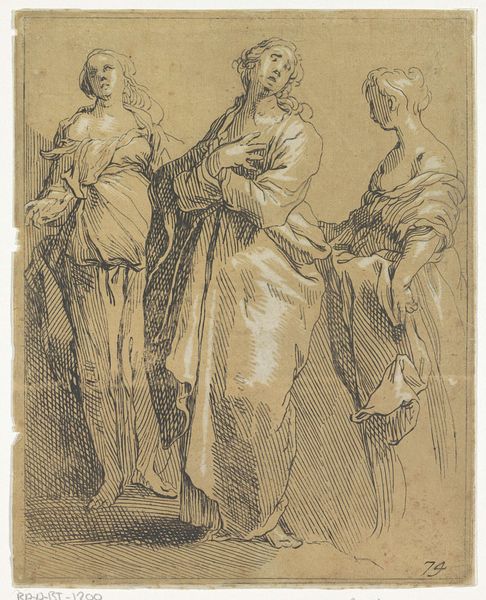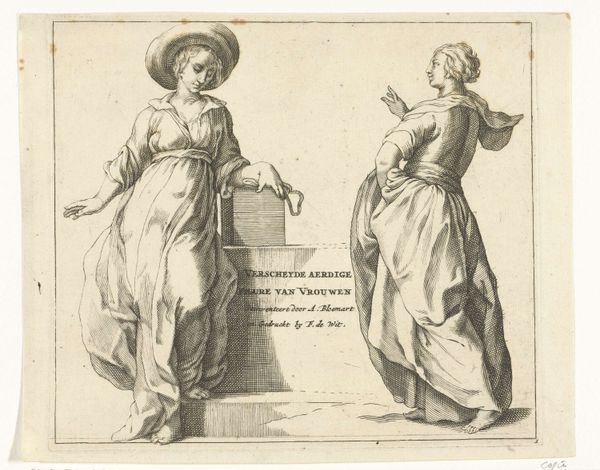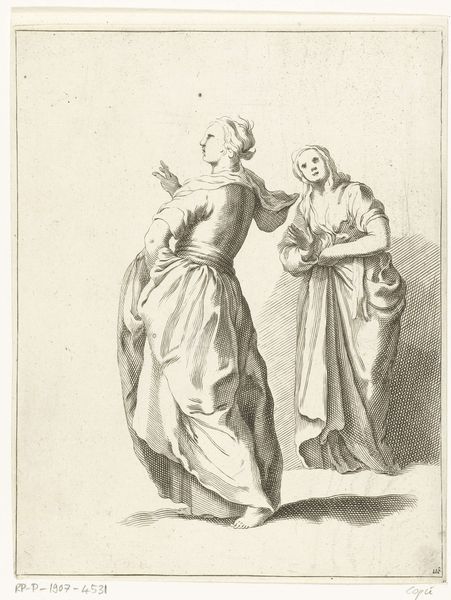
print, engraving
#
baroque
# print
#
figuration
#
genre-painting
#
history-painting
#
nude
#
engraving
Dimensions: height 152 mm, width 190 mm
Copyright: Rijks Museum: Open Domain
Curator: This is an engraving called "Drie vrouwen," or "Three Women," dating from somewhere between 1670 and 1706, though the artist remains anonymous. It’s part of the Rijksmuseum collection. What are your first impressions? Editor: Stark. There's a cool restraint, almost academic. You see the incised lines so clearly. It reminds me that printmaking, even then, was a labour intensive, craft-driven pursuit, even when depicting an aesthetic as seemingly elevated as this. Curator: It certainly speaks to the tradition of preparatory studies, doesn’t it? Prints like these would circulate amongst artists. Consider how this artwork plays into notions of idealized beauty, how the female form was codified, classified…almost like specimens in a scientific study, to then be deployed in grand history paintings, or allegories. Editor: Absolutely. And it's interesting to note the materials – engraving means etching into metal, creating a matrix, wiping ink. The sheer skill involved in translating flesh into those stark lines! And it makes you wonder, who owned this? What was the culture of consumption for these images? Curator: Those are essential questions! And thinking about ownership helps contextualize the print within a specific socio-economic sphere, right? This was a commodity intended for a particular viewership. The subtle differences in the women's drapery, their poses...do you read them as variations on a theme or indicators of distinct social roles being represented? Editor: A bit of both, perhaps. The draped fabrics highlight wealth and status. Also I’m just fascinated by how the act of engraving and printing affects how these images were received. A painting carries the aura of unique creation; this benefits from being reproducible. Curator: Precisely! Dissemination plays a pivotal role. And how does the reproductive nature alter the image's impact within the wider culture? We have a tension: on one hand we can find beauty here, while simultaneously acknowledging how social expectations confine identity. Editor: Yes, it speaks volumes, even with what seems like such simple materiality. Thinking about the layers of production and social intention really adds to the piece for me. Curator: And considering how artistic, material, and cultural currents converge helps reveal so much about this seemingly simple image.
Comments
No comments
Be the first to comment and join the conversation on the ultimate creative platform.
